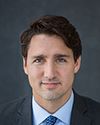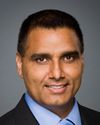Thank you for your question.
As I said earlier, I am Fransaskoise. I am originally a Quebecker, and I must tell you that the vision in Quebec of a bilingual Canada and the vision that francophones outside Quebec have are completely different. We often get the feeling that, in government and elsewhere, people think that life in Quebec goes on in French and that there is
the rest of Canada. Well, I live in the rest of Canada. I'm a proud francophone. I'm bilingual, but I'm a proud francophone.
My francophonie is a different experience from that of the people from Quebec. I wouldn't claim to represent someone who comes from Quebec or his or her opinion. I expect people to respect the fact that Quebeckers alone do not represent the Canadian francophone community.
We have artists back home, as is the case across the country. There are 2.5 million individuals who speak French outside Quebec. The differences between Quebec and us should be recognized. However, we like Quebec very much; it's a partner in many areas, but we are completely different. So we would not want anyone to think that, because you have a French-speaking Quebecer on a committee, the francophone and Acadian communities are represented on that committee.
I would also like to emphasize another fact. We talked about the various components of society. It's important for us that the first nations and the Métis community be represented as well.
When I come here as a Canadian, yes, I represent the francophone and Acadian communities, but, to my mind, there is first of all a principle of justice, of equity. Everyone has to be taken into account. We are not minorities.
I am a proud Canadian who contributes, and the cheque I am going to sign tomorrow for my taxes proves it. I contribute in the same way as any member of Canadian society today. The same is true of newcomers, of our first nations and of everybody. We contribute in our way to the economic and cultural growth and heritage of this country. I see no minorities in our country. We are full-fledged citizens.






